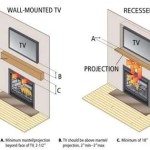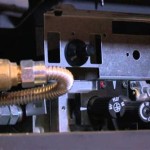Fireplace Blower Motors: Enhancing Fireplace Efficiency and Performance
Fireplace blower motors are essential components used to improve the heating capabilities of wood-burning fireplaces, gas fireplaces, and electric fireplaces. These motors power fans or blowers that circulate warm air from the fireplace into the surrounding room, increasing the overall efficiency and comfort provided by the fireplace. Without a blower, much of the heat generated by a fireplace is lost up the chimney or remains concentrated near the fireplace itself. Understanding the function, types, benefits, and maintenance of fireplace blower motors is crucial for homeowners seeking to optimize their fireplace performance.
Understanding the Function of Fireplace Blower Motors
The primary function of a fireplace blower motor is to drive a fan or blower that forces air across the heated surfaces within the fireplace. This forced convection process significantly enhances heat transfer. In a typical fireplace setup, the fire heats the firebox, the metal surrounding the fire. Without a blower, the heat radiates outwards, warming objects and air directly in front of the fireplace. However, the natural convection currents alone are insufficient to distribute the heat evenly throughout the room. A fireplace blower addresses this limitation by actively drawing cooler air from the room, directing it through the heated chamber of the fireplace, and then exhausting the warmed air back into the room.
Different types of blower motors are employed depending on the fireplace design and desired airflow. Centrifugal blowers, also known as squirrel cage blowers, are commonly used due to their ability to move large volumes of air at relatively low speeds. They are relatively quiet and efficient. Axial fans, on the other hand, are more compact and can move air along a straight path, which may be suitable for specific fireplace designs where space is limited. The selection of the appropriate blower motor type is critical for achieving optimal performance.
The placement of the blower motor within the fireplace system is also important. Typically, blower motors are positioned either at the bottom or the back of the firebox. In some designs, the blower motor may be installed in a separate compartment underneath or behind the fireplace for better access and noise reduction. The precise location will affect the efficiency of the blower and how effectively it can draw in cool air and distribute warm air throughout the room.
Types of Fireplace Blower Motors and Their Characteristics
Fireplace blower motors can be categorized based on several key factors, including their power source (AC or DC), motor type (shaded pole, permanent magnet, or electronically commutated), and blower design (centrifugal or axial). Each type has its own advantages and disadvantages in terms of efficiency, noise level, lifespan, and cost.
AC motors are the most common type used in fireplace blowers. These motors are typically powered by standard household electrical current (120V AC). Shaded pole motors are a simple and inexpensive type of AC motor often used in lower-end fireplace blowers. While they are reliable, they are also generally less efficient and noisier than other motor types. Permanent magnet motors are a more efficient AC motor option, offering higher performance and lower noise levels. Electronically commutated (EC) motors, also known as brushless DC motors, are the most advanced and efficient type of blower motor. They offer precise speed control, quiet operation, and a long lifespan, but they are also more expensive.
DC motors are less common in standard fireplaces but are often found in smaller electric fireplaces or those designed for use with battery backup systems. These motors typically require a transformer to convert AC power to DC power. They offer advantages such as variable speed control and potentially lower energy consumption, but may be more complex to install and maintain.
Centrifugal blower motors are characterized by their use of a squirrel cage fan that draws air into the center and expels it radially outward. These blowers are capable of moving large volumes of air at low pressure, making them suitable for distributing warm air throughout a room. They are often quieter than axial fans due to the lower fan blade speed. Axial fan motors, on the other hand, use a propeller-like fan to move air in a straight line. They are generally more compact and can generate higher air velocities, but they may also be louder and less efficient for heating larger spaces.
The choice of blower motor type will depend on the specific requirements of the fireplace and the homeowner's preferences. Factors to consider include the size of the room to be heated, the desired noise level, the available budget, and the fireplace's design limitations.
Benefits of Using Fireplace Blower Motors
The primary benefit of using a fireplace blower motor is increased heating efficiency. By actively circulating warm air, a blower can significantly improve the amount of usable heat that a fireplace provides. This can translate into lower heating bills and a more comfortable living environment, especially during colder months.
Improved heat distribution is another key advantage. Without a blower, the heat from a fireplace tends to concentrate near the fireplace itself, leaving other parts of the room cooler. A blower helps to distribute the warm air more evenly, creating a more consistent temperature throughout the space. This is particularly beneficial in larger rooms or open floor plan homes.
Enhanced comfort is a direct result of improved heating efficiency and distribution. A fireplace blower ensures that the room reaches a comfortable temperature more quickly and maintains that temperature more consistently. This can eliminate cold spots and create a more pleasant environment for living and relaxing.
Fireplace blowers also contribute to safety. By preventing the buildup of excessive heat near the fireplace, they can reduce the risk of overheating and potential fire hazards. They also ensure efficient combustion, leading to reduce smoke and emission.
Many modern fireplace blowers offer adjustable speed settings, allowing homeowners to customize the airflow and heat output according to their individual needs. This provides greater control over the heating process and ensures optimal comfort levels.
Maintenance and Troubleshooting of Fireplace Blower Motors
Proper maintenance is essential for ensuring the longevity and efficient operation of a fireplace blower motor. Regular cleaning is crucial for preventing dust and debris from accumulating on the fan blades and motor, which can reduce airflow and cause the motor to overheat.
Cleaning can be done by unplugging the blower motor and using a vacuum cleaner with a brush attachment to remove dust and debris from the fan blades, motor housing, and surrounding areas. Compressed air can also be used to blow out any remaining dust. It's important to ensure that the motor is completely dry before reconnecting it to the power supply.
Lubrication is another important aspect of blower motor maintenance. Many blower motors have sealed bearings that do not require lubrication. However, some older motors may have oil ports that require periodic lubrication. If the motor is noisy or seems to be running slower than usual, it may be necessary to lubricate the bearings with a few drops of lightweight machine oil. Avoid over-lubricating the motor, as this can attract dust and debris.
Common problems with fireplace blower motors include noise, reduced airflow, and complete failure. Noise can be caused by loose fan blades, worn bearings, or an obstruction in the blower housing. Reduced airflow can result from a dirty fan, a blocked air intake, or a failing motor. Complete failure may be due to a blown fuse, a broken wire, or a burned-out motor.
Troubleshooting these problems may involve checking the power supply, inspecting the fan blades for damage, cleaning the blower housing, and testing the motor with a multimeter. If the motor is found to be defective, it may need to be replaced. It is advisable to consult a qualified technician for more complex repairs or if you are unsure about any aspect of the maintenance process.
Replacing a fireplace blower motor is a relatively straightforward process, but it's important to choose a replacement motor that is compatible with the fireplace model. Ensure the correct voltage, amperage, and physical dimensions match, and consider improved designs, such as those employing EC motors for increased efficiency and quieter operation. Always disconnect the power supply before attempting any repairs or replacements.
By following these maintenance and troubleshooting tips, homeowners can ensure that their fireplace blower motors continue to operate efficiently and effectively, providing reliable heat and comfort for years to come.

Gz550 Fireplace Blower Kit For Continental Wolf Steel Napoleon Fireplaces Hearth Trends

Universal Fireplace Blower Fan 4 Blade Skeleton Style Midwest Hearth

Noisy Gas Fireplace Blower Here S How To Replace It Diy

Fireplace Blower Fan Kit For Regency 910 157 P Motor Fo

Fireplace Blowers Explained How Fans Work Regency

Bis Fireplace Blower Motor Kit Many Models Uzy5 Uzy7

Pleasant Hearth Vent Free Fireplace Blower Gfb100 The Home Depot

Superior Fbk 250 Variable Sd Blower Kit With Thermostatic Snap Switch For Gas Fireplaces

Electric Fireplace Fan Motor Power Generation Set Repair Parts Blower Burner Ca

Fireplace Blower Fan Kits And Motors Now Hearthtrends Hearth Trends
Related Posts








